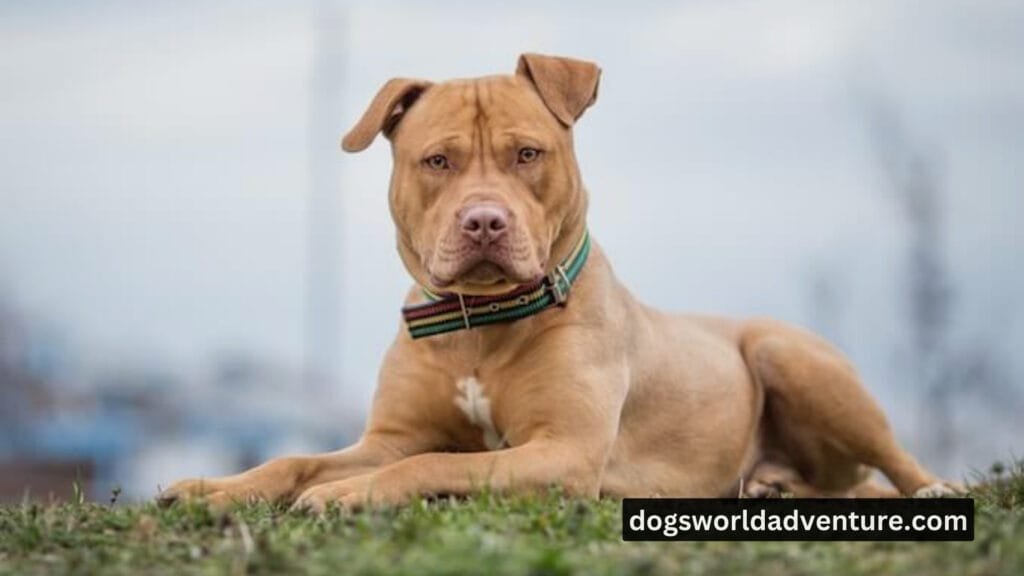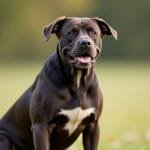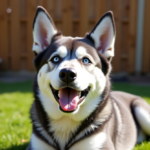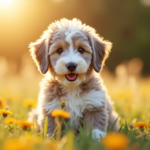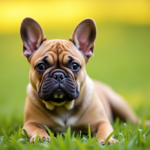The Bullboxer Pit is a friendly and strong dog that comes from mixing two popular breeds: the Boxer and the American Pit Bull Terrier. This dog is known for being loyal, playful, and protective. With its strong body and energetic nature, the Bullboxer Pit is great for families or people who like to stay active. These dogs are smart, easy to train, and love spending time with their owners. They can also make excellent guard dogs, thanks to their natural instinct to protect the people they love.
In this guide, we’ll explore everything you need to know about the Bullboxer Pit, including their appearance, personality, and how to care for them. You’ll learn what makes this breed special, how to train them, and how to keep them healthy. Whether you’re looking for a playful companion or a loyal protector, the Bullboxer Pit could be the perfect dog for you.
What is a Bullboxer Pit?
A Bullboxer Pit is a mixed-breed dog, specifically a cross between the Boxer and the American Pit Bull Terrier. Mixed breeds often inherit a variety of traits from both parent breeds, giving each Bullboxer Pit a unique combination of characteristics. These dogs are generally medium to large in size, with muscular bodies, short coats, and strong jaws. They are known for being loving, loyal, protective, and full of energy, making them great family dogs.
Bullboxer Pits are versatile and adaptable. They can thrive in a variety of homes as long as they are given enough exercise and attention. These dogs love being around people, and they form close bonds with their families. Their mix of strength and affection makes them perfect for active individuals or families looking for a dog that will be both a companion and a protector.
History of the Bullboxer Pit
To truly understand the Bullboxer Pit, it’s essential to learn about the history of both parent breeds: the Boxer and the American Pit Bull Terrier.
The Boxer
Boxers originated in Germany in the 19th century, primarily used for hunting large game like wild boar and deer. They were strong, agile, and had incredible endurance, making them excellent hunting companions. Over time, Boxers became more popular as guard dogs and later as family pets because of their playful, energetic, and affectionate nature.
Boxers are known for their square jawlines, muscular builds, and expressive faces. They also have a unique way of playing, using their front paws to “box” at things or other dogs. Their personalities are often described as goofy, fun-loving, and full of energy.
The American Pit Bull Terrier
The American Pit Bull Terrier has a different history. Initially bred in the United Kingdom for bull-baiting, they were later brought to the United States, where they were used as farm dogs and companions. Known for their strength, courage, and determination, Pit Bulls gained a reputation for being tough and reliable working dogs.
Despite the stereotypes and misunderstandings surrounding the breed, many Pit Bulls are loving, affectionate pets. They are incredibly loyal to their families and will go to great lengths to protect the people they care about. When raised in a positive environment with proper training, American Pit Bull Terriers can be friendly and social dogs.
The Rise of the Bullboxer Pit
The Bullboxer Pit breed is relatively new compared to its parent breeds. It was created by breeding Boxers with American Pit Bull Terriers to produce a dog that combines the playful energy of the Boxer with the strength and loyalty of the Pit Bull. The Bullboxer Pit quickly gained popularity due to its excellent personality traits and adaptability to various environments.
Physical Appearance of a Bullboxer Pit
One of the fascinating aspects of mixed breeds like the Bullboxer Pit is that no two dogs look exactly alike. They inherit traits from both parent breeds, which can lead to variations in size, coat color, and other physical characteristics.
Size and Build:
Bullboxer Pits are medium to large-sized dogs. They typically weigh between 50 and 80 pounds and stand about 20 to 27 inches tall at the shoulder. They have muscular, athletic bodies, reflecting the strong physiques of both the Boxer and the Pit Bull. Their chests are broad, and they often have a slender waist, giving them a powerful yet agile look.
Coat and Colors:
The Bullboxer Pit’s coat is short, smooth, and easy to maintain. They come in a variety of colors, including brown, black, white, and brindle. Some dogs may have a mix of colors or patterns, and others may be solid-colored. Their short coats make grooming relatively easy, although regular brushing is recommended to keep their coats shiny and healthy.
Facial Features:
Bullboxer Pits often have wide-set eyes and strong, broad jaws. Their ears can vary in appearance; some may have floppy ears like a Boxer, while others have more upright ears like a Pit Bull. Their expressive faces give them a confident and alert look, but their eyes often show the warmth and affection they have for their families.
Personality and Temperament
Bullboxer Pits are known for their well-rounded personalities. They are friendly, loyal, and protective dogs that enjoy being around people. Their energy levels make them excellent companions for families and individuals who enjoy staying active.
Loyalty and Protection
Bullboxer Pits form strong bonds with their families and will go to great lengths to protect their loved ones. Their natural instinct is to guard their homes, making them great watchdogs. If they sense danger, they will not hesitate to act, but they are also gentle and affectionate with the people they trust.
Playful and Energetic
This breed is full of energy. Bullboxer Pits love to play, whether it’s fetching a ball, running around the yard, or wrestling with other dogs. Their playful nature makes them great companions for children, although supervision is always recommended to ensure playtime stays safe. These dogs thrive in environments where they can burn off their energy through regular exercise and mental stimulation.
Affectionate and Friendly
Despite their strong, muscular build, Bullboxer Pits are incredibly affectionate. They enjoy cuddling up with their owners and being a part of family activities. Their friendliness extends beyond their immediate family, as they can be social with other people and pets if properly socialized from a young age.
Intelligent and Trainable
Bullboxer Pits are smart dogs, which makes them trainable. However, they can be stubborn at times, so consistent training is essential. They respond best to positive reinforcement methods, such as treats and praise. With the right approach, they can learn commands, tricks, and even complex tasks relatively quickly.
Training a Bullboxer Pit
Training a Bullboxer Pit is an important part of raising a well-behaved and happy dog. These dogs are intelligent, but their stubbornness can sometimes make training a challenge. The key to successful training is consistency, patience, and positive reinforcement.
Start Early
It’s best to start training your Bullboxer Pit as early as possible. Puppies are more adaptable and open to learning new commands and behaviors. Early training also helps establish your role as the leader, which is important for building a healthy relationship with your dog.
Use Positive Reinforcement
Bullboxer Pits respond well to positive reinforcement techniques. This means rewarding your dog for good behavior with treats, praise, or playtime. Avoid using harsh punishment, as it can lead to fear and aggression. Instead, focus on reinforcing the behaviors you want to see and redirecting unwanted behaviors.
Be Consistent
Consistency is crucial when training a Bullboxer Pit. Use the same commands and expectations every time you work with your dog. If you let certain behaviors slide one day and then correct them the next, your dog may become confused. Clear, consistent communication will help your dog understand what is expected of them.
Socialization
Socializing your Bullboxer Pit is just as important as teaching them basic commands. Expose your dog to different people, animals, and environments from an early age. This helps them become well-adjusted and reduces the risk of fear-based aggression. Puppy classes, trips to the dog park, and playdates with other dogs are great ways to help your Bullboxer Pit develop good social skills.
Common Training Challenges
Bullboxer Pits can be stubborn, so you may encounter some challenges during training. Stay patient and don’t give up if your dog doesn’t catch on right away. Break training sessions into short, focused periods, and always end on a positive note. Remember, training takes time, and each dog learns at their own pace.
How to Care for a Bullboxer Pit
Taking care of a Bullboxer Pit isn’t difficult, but they do have some specific needs that should be met to ensure they stay happy and healthy.
Exercise Needs
Bullboxer Pits are energetic dogs that need regular exercise to stay in shape. A daily walk or two, combined with some playtime in the yard or at the park, will help keep them mentally and physically stimulated. They also enjoy activities like fetch, running, and agility courses. Without enough exercise, Bullboxer Pits can become bored and may develop destructive behaviors.
Feeding
Like all dogs, Bullboxer Pits need a balanced diet to maintain good health. Choose a high-quality dog food that is appropriate for their age, size, and activity level. It’s important not to overfeed them, as obesity can lead to health problems. If you’re unsure about how much to feed your dog, consult your vet for advice.
Grooming
Bullboxer Pits have short coats that are easy to maintain. Regular brushing will help keep their coat shiny and free of loose fur. Bathing should be done as needed, usually once a month or when they get dirty. In addition to brushing and bathing, make sure to clean their ears, trim their nails, and brush their teeth regularly.
Veterinary Care
Regular vet check-ups are essential for keeping your Bullboxer Pit healthy. Vaccinations, flea and tick prevention, and heartworm medication should all be part of their routine care. It’s also important to watch for any signs of illness or injury and to consult your vet if you notice anything unusual.
Health Issues Common in Bullboxer Pits
While Bullboxer Pits are generally healthy dogs, they can be prone to certain health problems due to their parent breeds.
Hip Dysplasia
Hip dysplasia is a common issue in both Boxers and Pit Bulls, and Bullboxer Pits can inherit this condition. It occurs when the hip joint doesn’t develop properly, leading to pain and difficulty moving. Keeping your dog at a healthy weight and providing regular exercise can help reduce the risk of hip dysplasia, but it’s important to have your dog’s hips checked by a vet, especially as they get older.
Heart Conditions
Boxers are known to be prone to certain heart conditions, such as aortic stenosis and cardiomyopathy. These conditions can affect Bullboxer Pits as well. Regular veterinary check-ups, including heart exams, are important to catch any issues early.
Allergies
Some Bullboxer Pits may develop allergies that cause itching, skin irritation, or digestive problems. Common allergens include certain foods, pollen, and dust mites. If your dog shows signs of allergies, consult your vet to determine the cause and find the best treatment.
Obesity
Bullboxer Pits love to eat, so it’s important to monitor their weight and provide them with a balanced diet. Obesity can lead to joint problems, heart disease, and other health issues. Regular exercise and portion control are key to keeping your dog at a healthy weight.
Do Bullboxer Pits Get Along with Kids and Other Pets?
Bullboxer Pits are generally great with kids, especially if they are raised together. They are protective and gentle with their families, and their playful nature makes them fun companions for children. However, as with any dog, it’s important to supervise interactions between your Bullboxer Pit and young children to ensure everyone stays safe. Teaching kids how to properly interact with dogs—such as not pulling on their tails or ears—will help foster a positive relationship between them and your Bullboxer Pit.
When it comes to other pets, Bullboxer Pits can get along well with other dogs if they are properly socialized. However, their strong prey drive means they may not always do well with smaller animals like cats, rabbits, or guinea pigs. Early socialization and supervision are essential if you have other pets in the home.
How Long Do Bullboxer Pits Live?
Bullboxer Pits have a lifespan of about 10 to 14 years, which is typical for medium to large dog breeds. With proper care, including regular vet visits, a healthy diet, and plenty of exercise, your Bullboxer Pit can live a long, happy life. Paying attention to their health and addressing any issues early can help ensure that they stay healthy and active well into their senior years.
Conclusion
The Bullboxer Pit is an incredible breed that combines the best traits of the Boxer and the American Pit Bull Terrier. They are loyal, protective, playful, and affectionate dogs that can bring a lot of joy to the right home. If you’re considering adding a Bullboxer Pit to your family, make sure you’re ready to provide them with the exercise, training, and attention they need to thrive.
Whether you’re looking for a guard dog, a jogging partner, or a snuggle buddy, the Bullboxer Pit can fit into a variety of roles. With the right care, training, and socialization, they will be a loving and devoted companion for years to come.
FAQs
- What is a Bullboxer Pit?
A Bullboxer Pit is a mixed breed dog, a cross between a Boxer and an American Pit Bull Terrier. - How big do Bullboxer Pits get?
Bullboxer Pits typically weigh between 50 and 80 pounds and stand about 20 to 27 inches tall. - Are Bullboxer Pits good family pets?
Yes, Bullboxer Pits are known for being loyal and protective, making them great family pets. - Do Bullboxer Pits get along with other pets?
They can get along with other dogs if properly socialized, but they may have a high prey drive with smaller animals. - How much exercise do Bullboxer Pits need?
Bullboxer Pits need at least an hour of exercise every day to stay happy and healthy. - Are Bullboxer Pits easy to train?
They are intelligent and can be trained with positive reinforcement, but they can be stubborn at times. - What health issues do Bullboxer Pits face?
Common health issues include hip dysplasia, heart conditions, allergies, and obesity. - Do Bullboxer Pits shed a lot?
They have short coats that don’t shed much, but regular brushing helps keep their coat healthy. - Can Bullboxer Pits live in apartments?
They can live in apartments if they get enough exercise, but they thrive best in homes with yards. - How long do Bullboxer Pits live? Bullboxer Pits have a lifespan of about 10 to 14 years.

